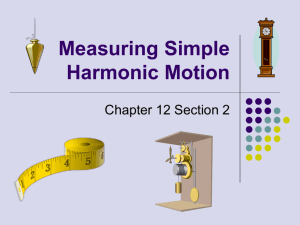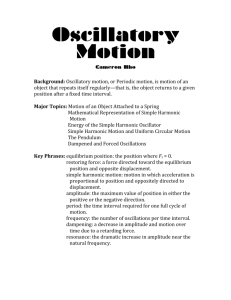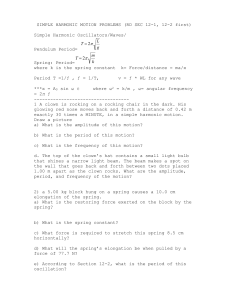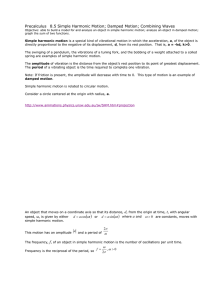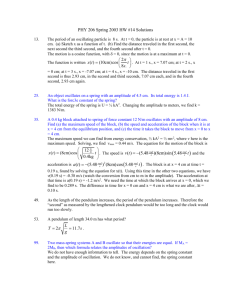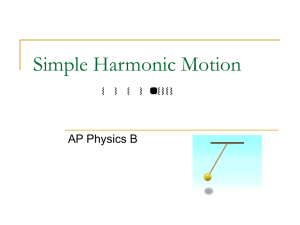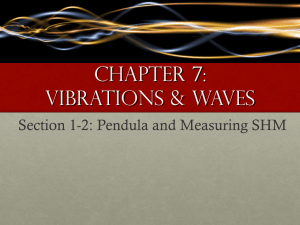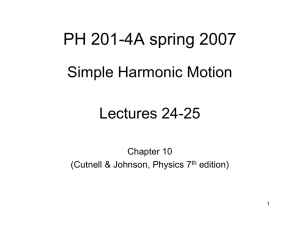Simple Harmonic Motion
advertisement
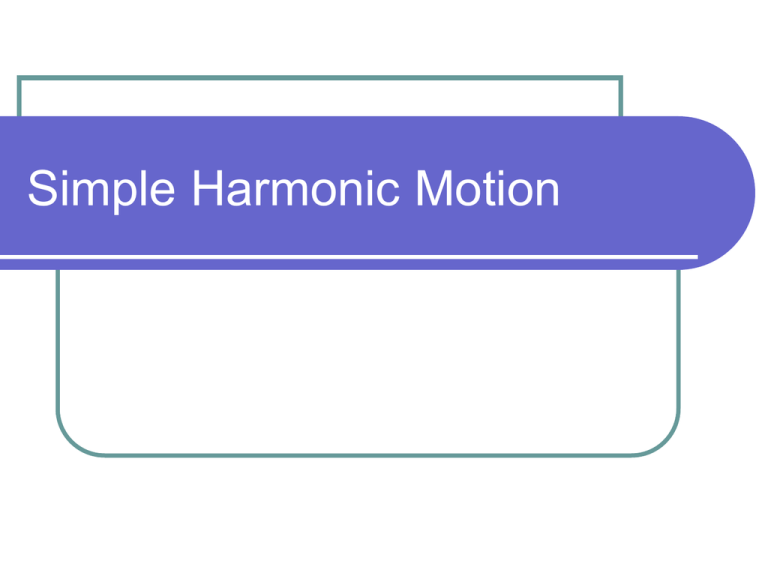
Simple Harmonic Motion The Ideal Spring and Simple Harmonic Motion FxApplied k x spring constant Units: N/m Sample Problem Hooke’s Law If a mass of 0.55 kg attached to a vertical spring stretches the spring 2.0 cm from its original equilibrium position, what is the spring constant? mg (0.55 kg)(9.81 m/s2 ) k x –0.020 m k 270 N/m Simple Harmonic Motion Simple harmonic motion describes any periodic motion that is the result of a restoring force that is proportional to displacement. The motion of a vibrating mass-spring system is an example of simple harmonic motion. Because simple harmonic motion involves a restoring force, every simple harmonic motion is a back-and-forth motion over the same path. The Simple Pendulum A simple pendulum consists of a mass called a bob, which is attached to a fixed string. The forces acting on the bob at any point are the force exerted by the string and the gravitational force. Amplitude, Period, and Frequency Amplitude of the vibration is the maximum displacement from equilibrium. A pendulum’s For a mass-spring system, measured by the angle between the pendulum’s equilibrium position and its maximum displacement. the maximum amount the spring is stretched or compressed from its equilibrium position. SI units are radian (rad) and meter (m). The period (T) is the time that it takes a complete cycle to occur. The SI unit of period is seconds (s). The frequency (f) is the number of cycles or vibrations per unit of time. The SI unit of frequency is hertz (Hz). Hz = s–1 1 1 f or T T f Period of a Simple Pendulum The period of a simple pendulum depends on the length and on the freefall acceleration. L T 2 ag length period 2 free-fall acceleration The period does not depend on the mass of the bob or on the amplitude (for small angles). Period of a Mass-Spring System The period of an ideal mass-spring system depends on the mass and on the spring constant. m T 2 k mass period 2 spring constant The period does not depend on the amplitude. This equation applies only for systems in which the spring obeys Hooke’s law. Simple Harmonic Motion and the Reference Circle DISPLACEMENT x A cos A cos t Amplitude Constant angular speed (rad/s) Simple Harmonic Motion and the Reference Circle x A cos A cos t Amplitude Constant angular speed (rad/s) amplitude A: the maximum displacement period T: the time required to complete one cycle frequency f: the number of cycles per second (measured in Hz) 1 f T 2 2 f T The Maximum Speed of a Loudspeaker Diaphragm The frequency of motion is 1.0 KHz and the amplitude is 0.20 mm. (a)What is the maximum speed of the diaphragm? (b)Where in the motion does this maximum speed occur? v x vT sin A sin t vmax (a) vmax A A2 f 0.20 10 3 m 2 1.0 103 Hz 1.3 m s (b) The maximum speed occurs midway between the ends of its motion.

